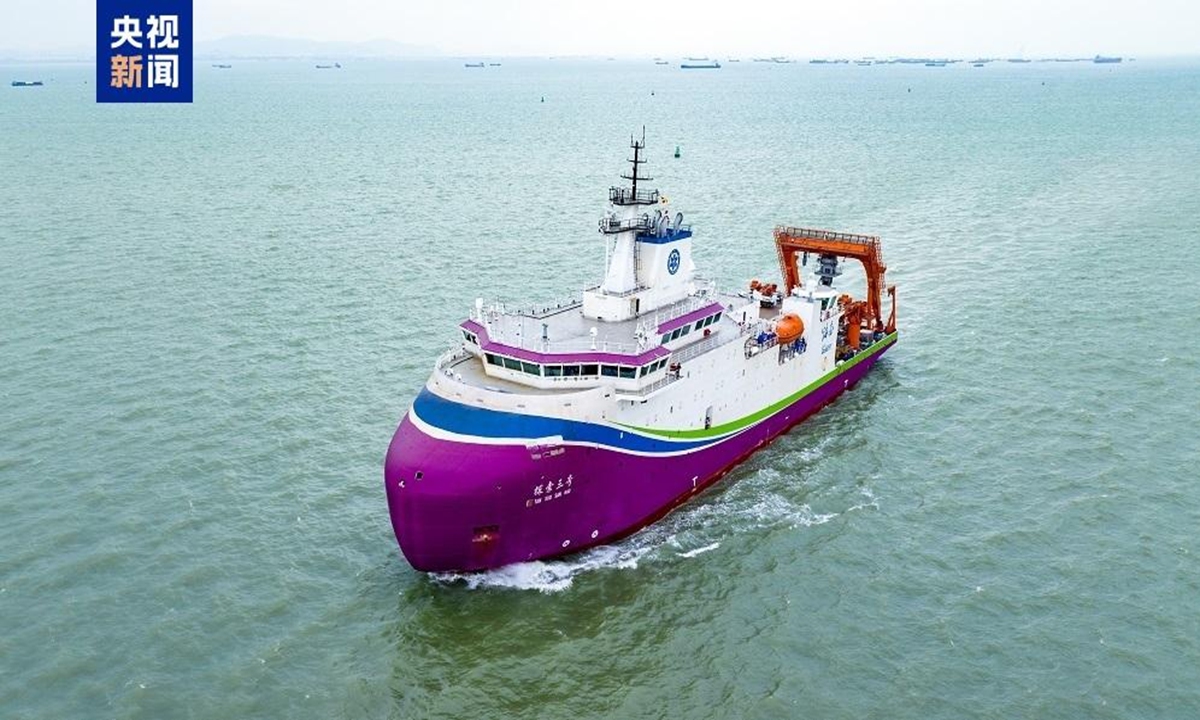China’s New Deep-Sea Research Vessel Launched

China has made a significant advancement in deep-sea exploration with the launch of its latest research vessel, Tan Suo San Hao, or Exploration No.3. This state-of-the-art vessel was delivered and launched from Nansha in Guangzhou, Guangdong Province, on December 26, 2024. The new ship represents a major step forward in China’s capabilities for scientific research and archaeological investigations in deep-sea environments.
A Technological Marvel for Deep-Sea Exploration
The Exploration No.3 is China’s first comprehensive scientific research ship specifically designed for global deep-sea exploration. Measuring approximately 104 meters in length and displacing around 10,000 tons, this vessel is equipped to handle a variety of challenging environments, including polar regions. It boasts a top speed of 16 knots and features dual-directional icebreaking capabilities at both its bow and stern. This allows it to navigate through icy waters effectively, making it a vital asset for summer operations in the Arctic and Antarctic regions.
One of the standout features of the Exploration No.3 is its impressive range of 15,000 nautical miles. This extensive range enables the vessel to conduct long-term research missions without the need for frequent returns to port. The ship can accommodate up to 80 personnel, providing ample space for scientists and researchers to work collaboratively on various projects. The vessel is equipped with advanced scientific research control equipment, including China’s largest domestically developed water-tight scientific research moon pool system. This system allows for safe and efficient deployment of underwater research tools and vehicles.
Collaborative Efforts in Design and Technology
The development of the Exploration No.3 involved extensive collaboration among various research institutions, enterprises, and universities. This teamwork was crucial in overcoming significant technological challenges. The design of ice-capable vessels, precise dynamic positioning under icy conditions, and intelligent ship control technologies were all areas where expertise was pooled to achieve success.
The vessel integrates cutting-edge deep-sea acoustic detection equipment specifically designed for ice areas. It also features advanced communication and positioning systems, as well as a dynamic positioning system that enhances its operational capabilities. These technologies are entirely domestically developed, showcasing China’s growing expertise in maritime research and exploration.
The Exploration No.3 is not just a vessel for scientific research; it also plays a crucial role in deep-sea archaeological investigations. With its enhanced capabilities, it will extend China’s manned submersible operations to cover all marine environments. This will significantly strengthen the nation’s efforts in deep-sea archaeology, allowing for more comprehensive studies of underwater sites and artifacts.
In summary, the launch of the Tan Suo San Hao marks a new era for China’s deep-sea exploration initiatives. With its advanced technology and collaborative development, this vessel is set to make significant contributions to scientific research and archaeological discoveries in the world’s oceans.
